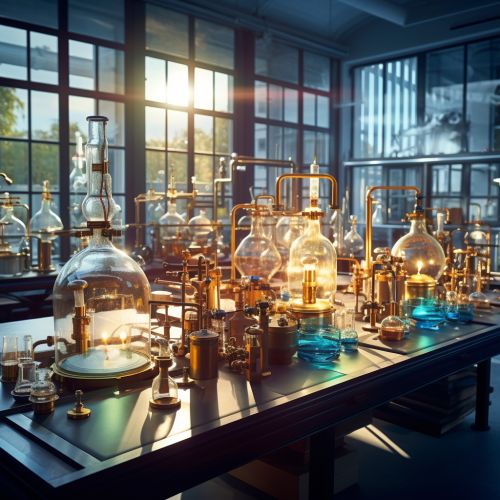Medicinal Chemistry
Introduction
Medicinal chemistry is a multidisciplinary field that combines aspects of organic, analytical, and biochemical sciences to synthesize and develop new therapeutic agents or drugs. The field is primarily concerned with the discovery, design, development, and both qualitative and quantitative characterization of drug substances.


History
The origins of medicinal chemistry can be traced back to the extraction and preparation of medicinal substances from natural sources. The first synthetic drug, acetylsalicylic acid, was produced by Felix Hoffman at Bayer AG in 1897. The 20th century saw the introduction of antibiotics and the development of medicinal chemistry as a major area of research.
Drug Discovery and Design
The process of drug discovery involves the identification of candidates, synthesis, characterization, screening, and assays for therapeutic efficacy. Once a compound has shown its value in these tests, it will begin the process of drug development prior to clinical trials.
Target Identification and Validation
The first step in drug discovery is the identification of a suitable target, which is usually a key molecule involved in a disease condition. The target is then validated by confirming the hypothesized therapeutic effect of modulating the target in disease models.
Lead Discovery and Optimization
Lead discovery involves the identification of lead compounds that interact with the target molecule. These leads are then optimized to improve their properties, such as potency, selectivity, and pharmacokinetic characteristics.
Pharmacokinetics and Pharmacodynamics
Pharmacokinetics (PK) is the study of how an organism affects a drug, while pharmacodynamics (PD) is the study of how a drug affects an organism. Both PK and PD are integral parts of medicinal chemistry, providing important information about the absorption, distribution, metabolism, and excretion (ADME) of drugs, as well as their biochemical and physiological effects.
Quantitative Structure-Activity Relationship (QSAR)
Quantitative Structure-Activity Relationship (QSAR) studies are mathematical models used to predict the activities of compounds based on their structural properties. QSAR models can be used to predict the activity of new, untested compounds for drug discovery.
Synthetic Chemistry in Medicinal Chemistry
Synthetic chemistry is a crucial part of medicinal chemistry, as it is used to create new drug molecules. Synthetic chemists use a variety of techniques, including combinatorial, green, and solid-phase chemistry, to design and synthesize new drug candidates.
Challenges and Future Directions
Despite the advances in medicinal chemistry, there are still many challenges to overcome. These include the development of drugs for complex diseases such as cancer and neurodegenerative disorders, the increasing cost of drug development, and the need for more effective and safer drugs. The future of medicinal chemistry lies in the development of personalized medicine, targeted therapies, and the use of artificial intelligence in drug discovery.
